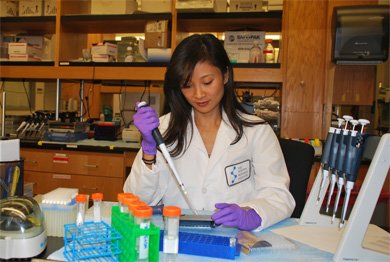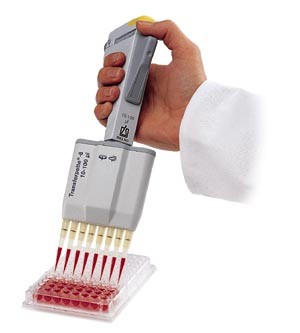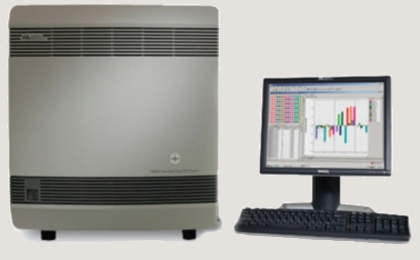It was very quite today as most of the staff were at a genetics conference in Germany, therefore I worked with Paul, who works with bioinformatics and sequencing DNA.
Over the coarse of the morning Paul introduced me to using the different commands on a different type of computer software called linux. He also taught me how to download and install new computer programmes on the computer.
| Command | Action |
| pwd | "Print working directory" - show what dir you're in. |
| ls | List the contents of a dir. |
| ls -l | List the contents of a dir and show additional info of the files. |
| ls -a | List all files, including hidden files. |
| cd | Change directory. |
| cd .. | Go to the parent directory. |
|
A list of some of the commands used in linux.
He explained how the servers and the computer systems work at St.James's and how they are connected to Trinity aswell. Later on I looked at some youtube videos on the way in which the DNA is sequenced to make sure I fully understood how it worked. I also had to reseach different sites in order to explain the computer software behind it.
Paul showed me a sample result of what the sequencing should look like at the end. We then began sequencing the first read of Lane 4 of the DNA. Once this was finished we sequenced the second read of DNA of lane 4. It is a quite slow process as it takes the server some time to process all of the information and pick out the correct information needed. While the computer/server sequenced all of the DNA smaple, I look at different programmes which anylsis the DNA sequencing result. You basically have to look for mutations in the DNA and compair it with a control. Some of the mutations can have an effect on the person and some cannot. The more reads you have to work with the surer you can be with your judgement. Paul discribed how he would continue running different reads over the coarse of the next week and then have them for me to work on next Wednesday.
Here is a link to the website used to analysis the DNA that is sequenced.
I really enjoyed today as it was a completely different experience for me working with different forms of software. I thuraly enjoyed working with Paul today as he not only taught me a great deal about computer science, he also explained to me about collage choices and job opportunities in the subject of science.






.jpg)



